| T O P I C R E V I E W |
| maryjane |
Posted - Oct 16 2019 : 05:50:07 AM
Janet, how's Nellie's teat? I have my bottle of Underwood and baking powder ready should I need it. I assume I'd transfer some of the Underwood into a spray bottle????
Yesterday was a big day for us; we seeded several large strips of native flowers and grasses. I consulted with my neighbor, Jacie, and Trish Heekin from the Latah Soil & Water Conservation District as to what types of prairie short-grasses and flowers (forbs) would grow in an area that appears to be too moist for the grasses and forbs Jacie planted there in "pollinator" strips in 2006. What's mainly growing there now is tar weed. It's a native plant that moves into problem areas. Trish recommended some native grasses that do better in moist areas. Jacie had some flower recommendations. And unbelievably, because of Jacie's ground-breaking passion for converting land to native prairie, there are now several local businesses specializing in the growing and selling of native plant seed. Jacie sells what she grows also. And to think she started out many years ago by walking the ridge (Paradise Ridge visible in the distance) carrying a gunny sack and filling it with seeds that she took home and figured out how to cultivate. It's amazing to see what she and her husband Wayne are doing now: acres and acres planted in crops like yarrow or goldenrod, different grasses, etc.
Spike Bentgrass
California Brome
Mountain Brome
Bluejoint Reedgrass
California Oatgrass
Tufted Hairgrass
Slender Hairgrass
Blue Wildrye
Meadow Barley
Oregon Sunshine
Blanket Flower
Wild Iris
Camas
The Soil and Water Conservation district has a seeder (speciality machine for tiny native seeds) and Jacie loaned us her tractor to pull it (ours isn't big enough). The seeds were mixed with corn grits to help with flow as they're being "drilled" into the ground.
Jacie's strips were gorgeous this past spring (she planted about 10 acres in pollinator strips a dozen or so years ago). We call them Jacie strips (noun:) The two new strips we planted yesterday are called "Janet strips." (Janet, I know how much you value pollinators and your own prairie that you've planted.) I figure naming them after two of my favorite land stewards will make it super easy to refer to them.
Good stand of native grasses:
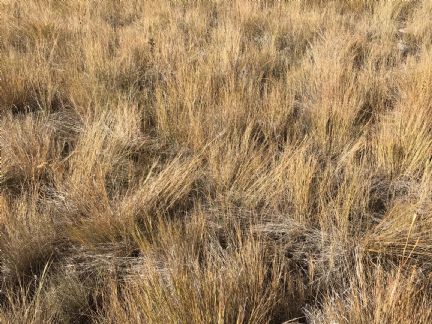
Stand of tar weed:
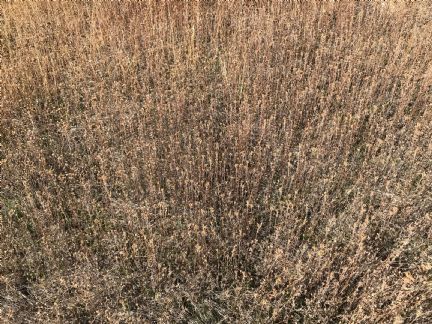
Comparison (dark patches are the tar weed; light are prairie grasses):
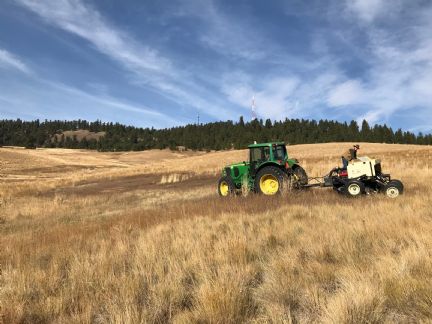
A few weeks ago, we thought to reseed it by rototilling the tar weed, but we stopped after one pass.
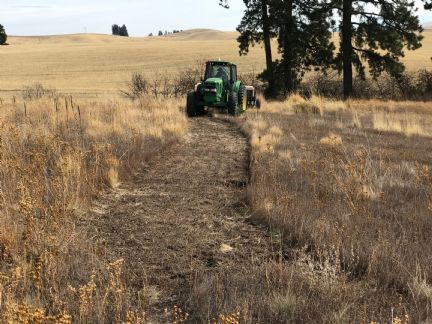
Jacie pointed out some of the native flowers that had managed to survive amongst the tar weed (that we wouldn't want to kill by rototilling) and told us about a drill we could borrow for free from the government. Here's a penstemon.
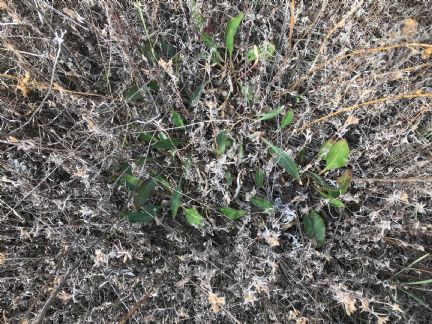
And here's what an entire patch of that looks like in the spring.
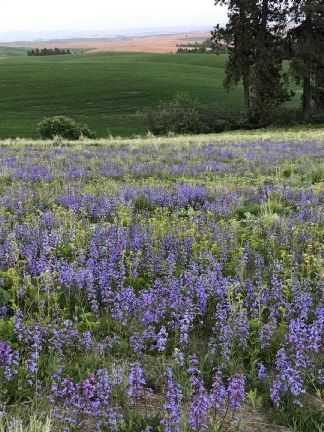
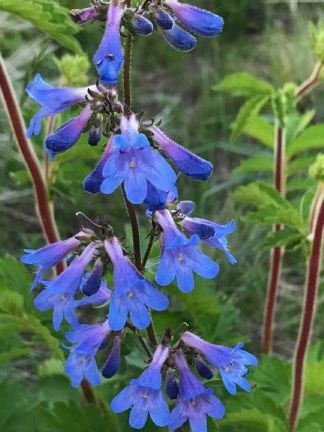
Here's what the hopper looked like after we loaded the two 50# sacks we bought into it (corn grits and native seed stock).
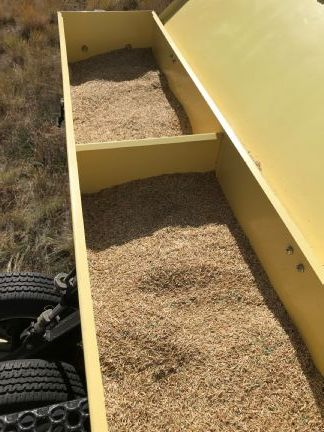
A drill works like two facing plates (disks) with sharp edges pushing into the ground while dropping seed into the cut that the rotating plates make.
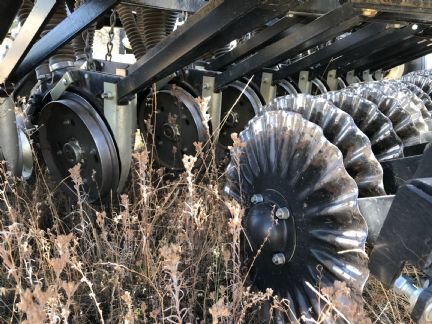
And here are what the marks in the ground look like. Very little impact; existing flowers survive the intrusion and the tar weed is then crushed on top to serve as mulch.
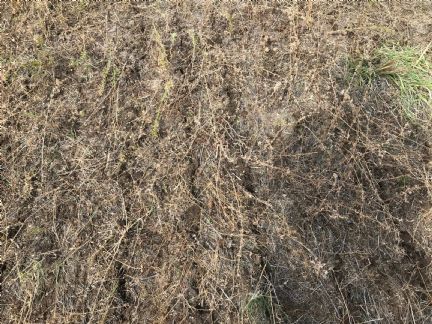
Here's where one of our Janet strips is in relation to our cluster of buildings.
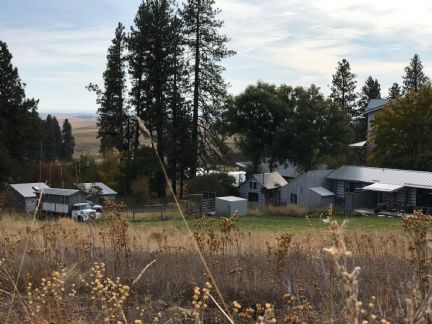
You can see a few more tar weed patches in the distance that we'll plant next fall after we get down on our hands and knees to see what sprouts this spring and observe how well it does during the summer. In the foreground in this photo are ready-for-winter tall cinquefoil seed pods (I'm standing in a Jacie strip).
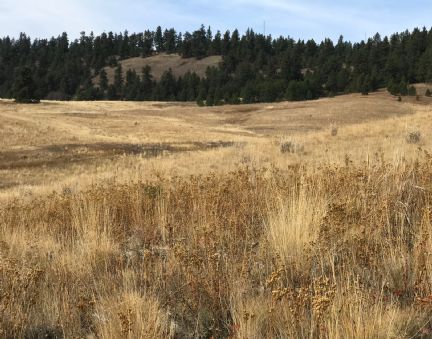
Here's what one of Jacie's healthy pollinator strips looks like. It has a mix of native grasses and lots of flowers.
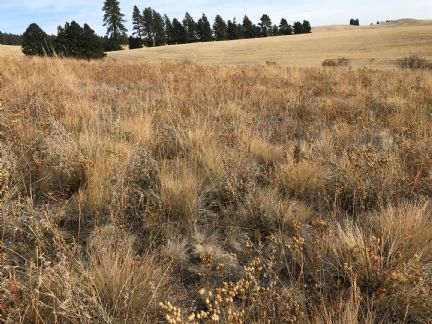
The dark, tar weed patches in this photo (up close and those in the distance) have now been planted. I'm excited for next spring to see what happens.
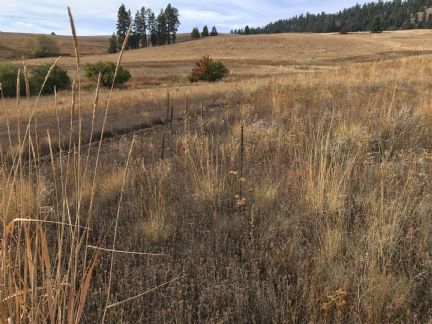 |
| 2 L A T E S T R E P L I E S (Newest First) |
| NellieBelle |
Posted - Oct 16 2019 : 1:42:01 PM
Oh, yes, a spray bottle. My vet left me with a spray bottle. It has to be washed out after each use. If you don't it won't work. She said corrosive. I wash the nozzle out and spray out all the medicine and then clear water until it's dry again before putting it back in the bottle of solution. My pretty spotted Lady Slipper orchid bloomed. Lovely. 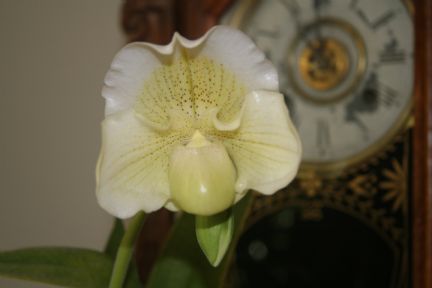 |
| NellieBelle |
Posted - Oct 16 2019 : 1:35:20 PM
Prairie planting is so rewarding and exciting. We have dear friends who have Diversity Farms & SOAR (Saving Our Avian Resources) that have been seeding, planting, prairie burns, harvesting seed for years. It's the most fascinating and interesting to learn about it all. Different germination, stratification, scarification, it pulls you in and once you have walked in tall grass prairie you're hooked. It's wonderful. And I love the aroma and scents that the prairie has on a warm day. So happy and excited for you MaryJane. Nothing else like it. Nellie is doing okay. I let her out of the barn today as she was getting depressed. The calf needed to be out and running too, he was so happy to get outdoors. I've checked on her several times to make sure she isn't getting the teat dirty or wet. Should have a couple more dry days so that will help. Here is a photo I just took,  . I know it still looks gross, but you're not to wash it or bother it other than the Underwood spray and baking powder. I'm pleased with the way it's healing. Have to be careful of flies bothering also, another reason vet wanted her to stay in stall, but Nellie quit eating and wanted out. I will put her in this evening at milking time and she can spend the night in the stall but she is going back outside tomorrow when it's to be in the 70's. Sunshine is healing and uplifting, even for cows. . I know it still looks gross, but you're not to wash it or bother it other than the Underwood spray and baking powder. I'm pleased with the way it's healing. Have to be careful of flies bothering also, another reason vet wanted her to stay in stall, but Nellie quit eating and wanted out. I will put her in this evening at milking time and she can spend the night in the stall but she is going back outside tomorrow when it's to be in the 70's. Sunshine is healing and uplifting, even for cows. |
|
|
![[flourish]](/images/flourish-txt_mobius.png)
![[flourish]](/images/flourish-txt_mobius.png)